UPLIFT: Helping the Women of Mexico through Art
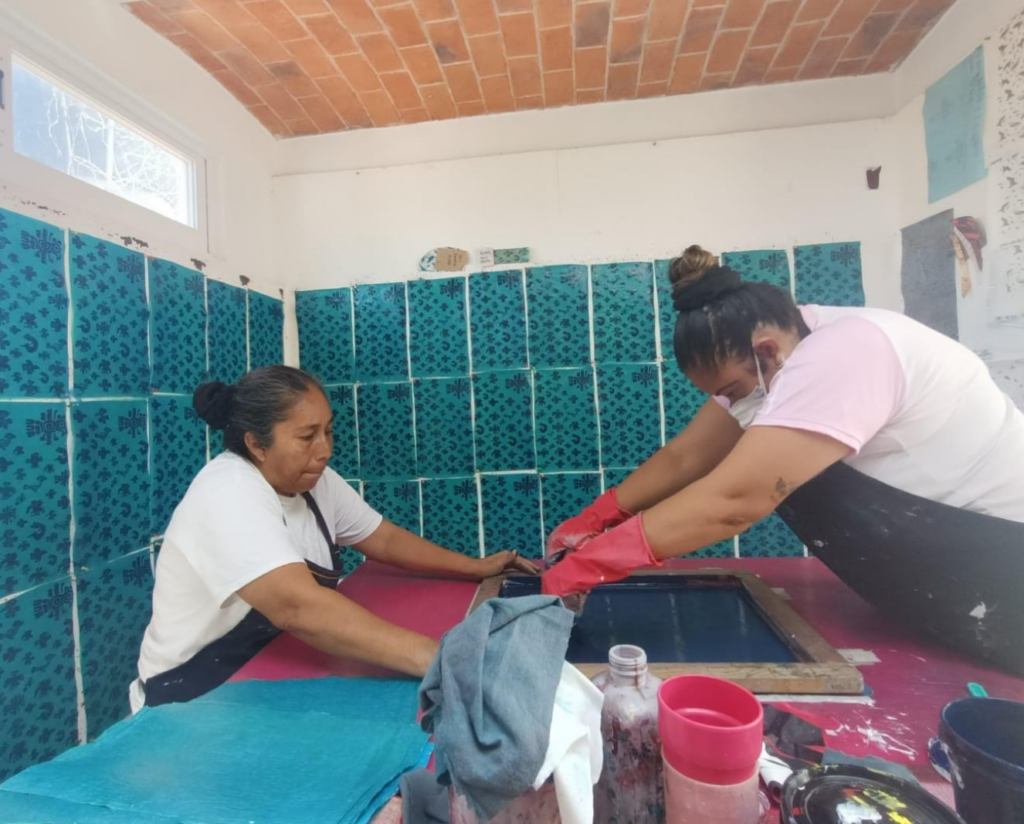
Before I tell you about all the wonderful Mexican women I work with, let me set the stage by telling you a little about me. When I was young, I spent many weekends making clothing from scratch with my mother, her twin (my Aunt Shirley) and my cousin Ellen. We worked in teams cutting out […]
Horsehair and the process of waiting
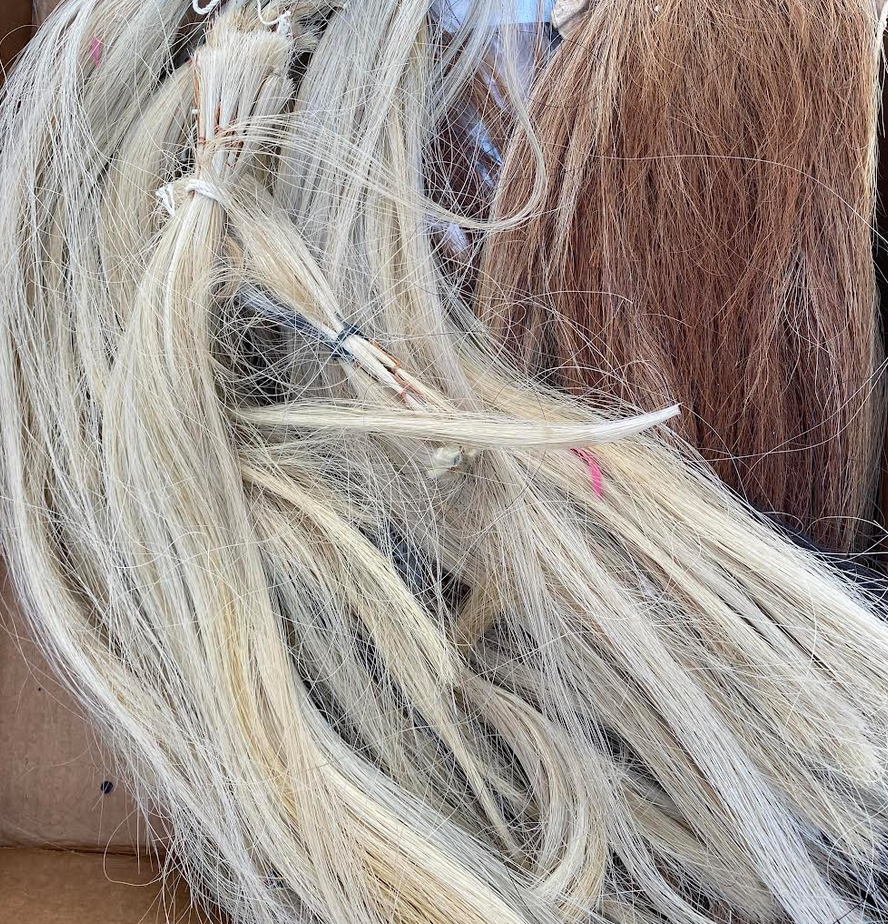
Box of horsehair! Lucky Me! Many years ago, I had a studio at the Arts & Industry Building in Florence, Mass. There were over 70 artist studios and small businesses tucked into this old brush factory. One of my neighbors on the fourth floor was a fellow who restored violin bows. Violinists from around the […]
Archivo Grafica Printmaking Studio in Mexico City welcomes me with open arms
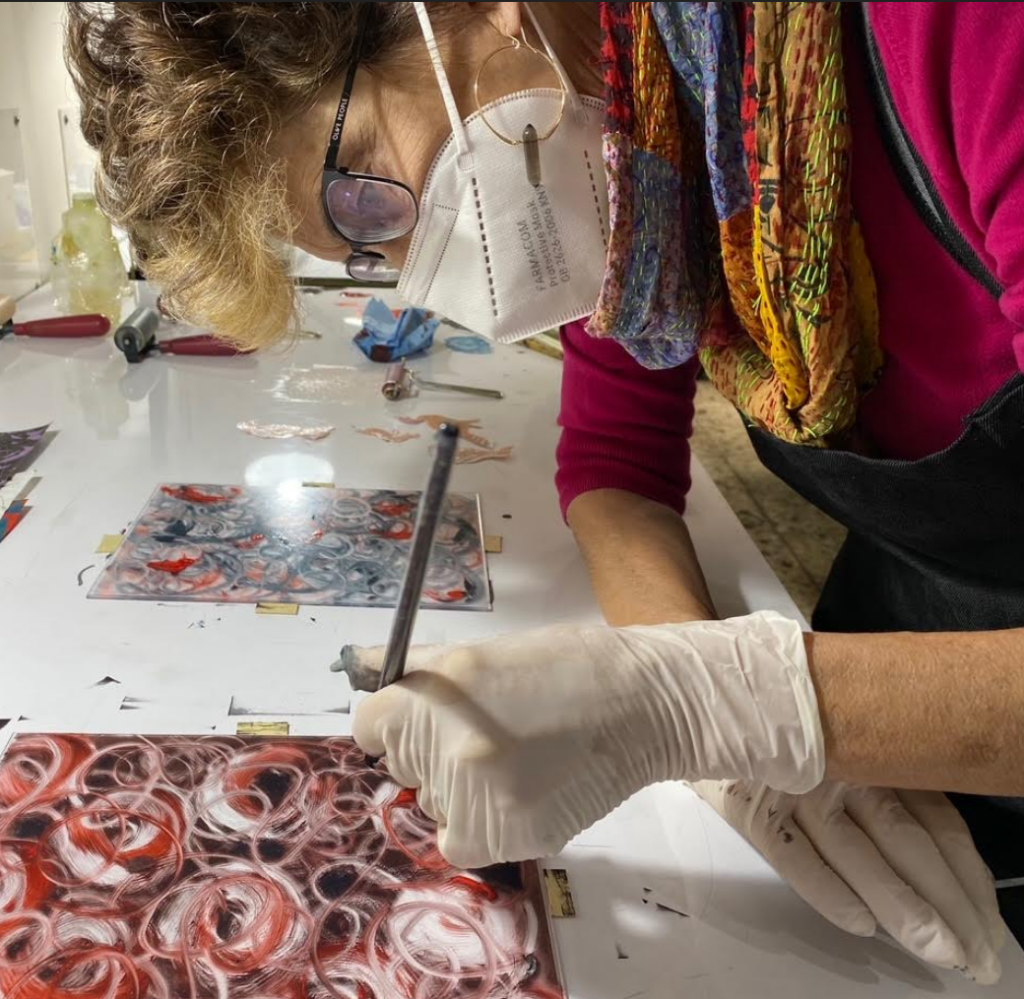
One of my new artist friends is Ana Lopez-Montes who I met through the Art Lab virtual residency at PRPG.mx. She is also the studio manager for Archivo Gráfica, a printmaking studio that has been located in Roma, in downtown Mexico City, for the last 30 years. To be honest, when Ana started to urge […]
Residency at Hypatia-in-the-Woods

Like many artists, I enjoy getting away from my daily life and periodically indulging myself in an artist residency. In August 2021, I spent a heavenly two weeks at Hypatia-in-the-Woods located in South Puget Sound, south of Seattle, WA. Drawing desk at Holly House Holly House in the Woods Artist in the doorway of Holly […]
Relationship between drawings and artwork
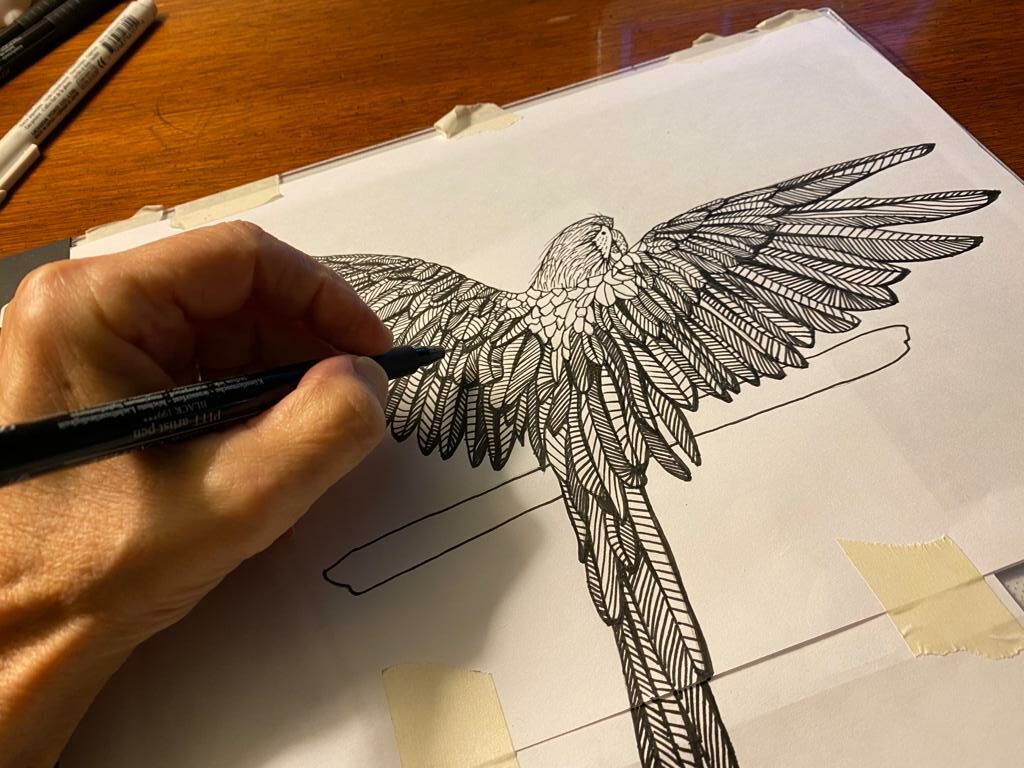
Drawing and research are the basic building blocks of my art practice. Let me take you through the process so that you can see how the drawings and my art are completely intertwined. My work entails a lot of research. I read about birds that are endangered by habitat fragmentation, climate change, extreme weather events […]
Why White? My ongoing white series
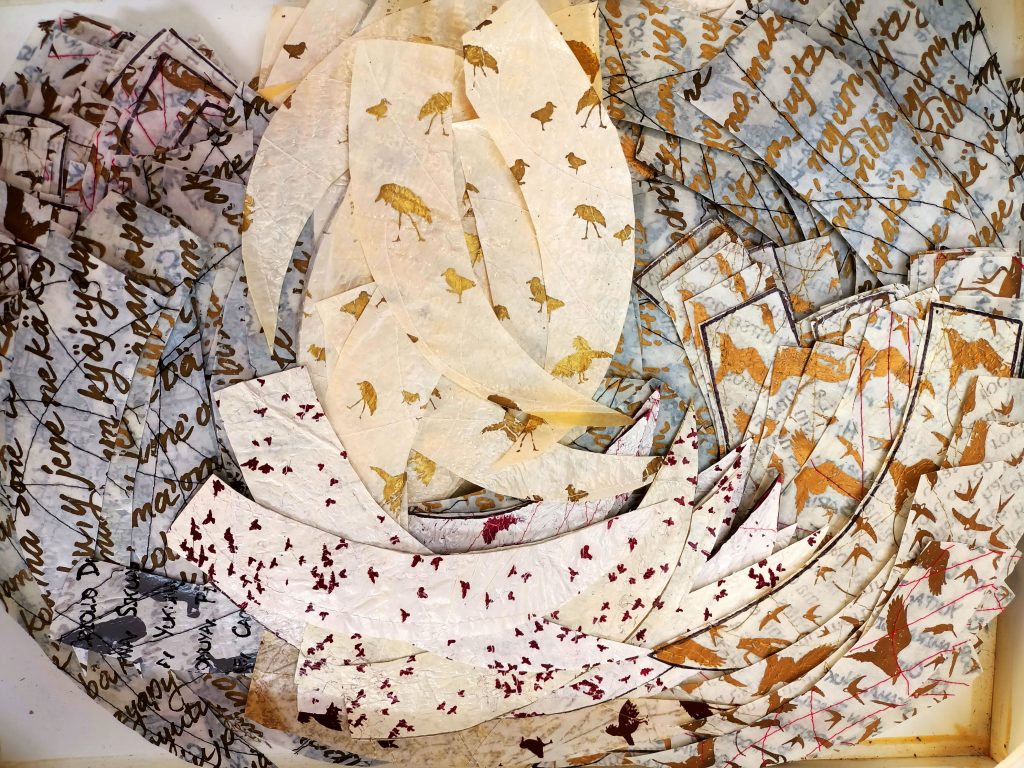
“…sometimes, like meditating, I need to visually take a breath. After every two or three richly colored pieces, I need to make a piece in white.” I love color. Deep, saturated color that elevates your heart rate. Most of my work over the years has been done in earth tones and rich jewel tones. But […]
My Floor as Evidence of Productivity
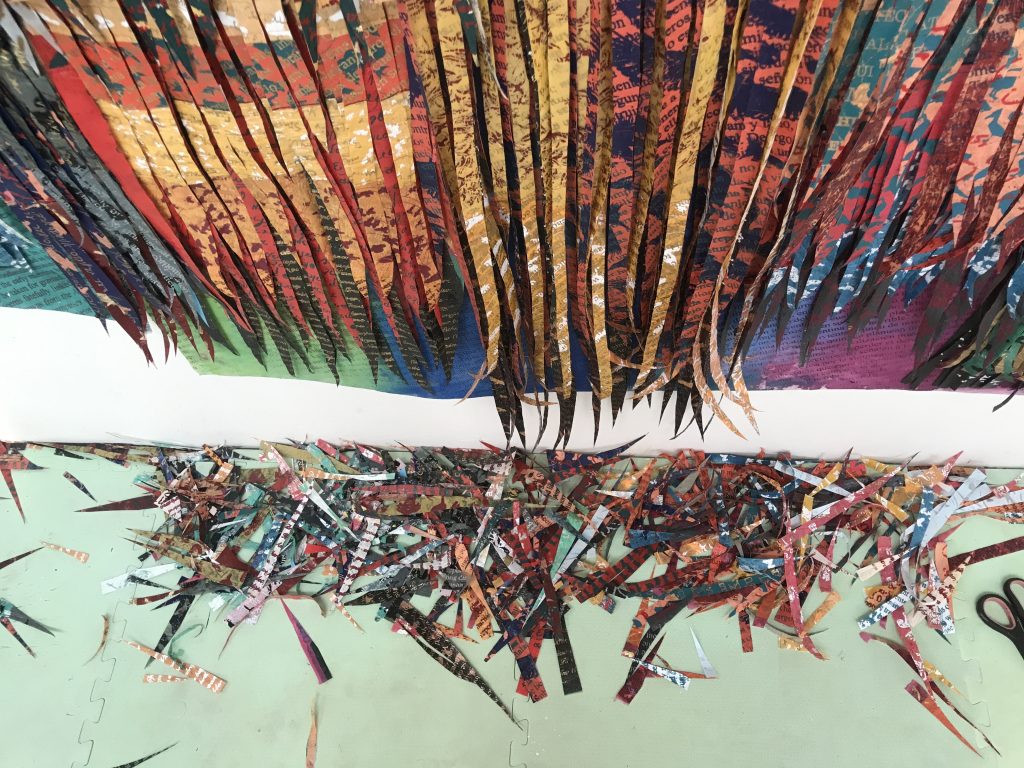
You’re probably thinking, isn’t your work the evidence of productivity? Well, yes and no. Work ebbs and flows. Like most abstract painting, I build up the surface of my work and sometimes tear it down until I get it right. Despite the progress on the wall, the floor becomes the evidence of how much work […]
The Making of Ropa Blanca
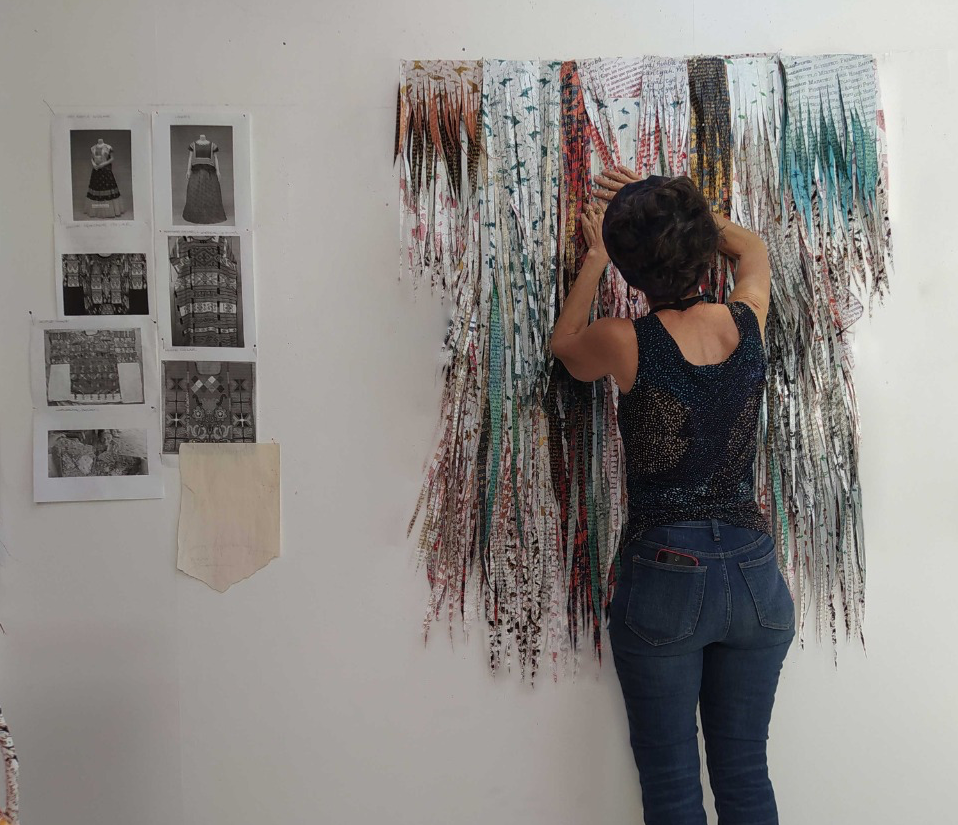
I have just finished my first huipil-inspired piece titled Ropa Blanca. Many of my pieces gestate for a long time and Ropa Blanca was no exception. Like in my piece Kimono, I used the huipil, a traditional women’s blouse, as my inspiration. The references included images of Frida Kahlo’s clothing that are now on view […]
Looking back on 2016 France Residency

Since it was fall and a bit chilly, there were no other residents. We each had a private bedroom and also a writing or drawing studio. We settled into a rhythm of working most of the day, taking rambles through the beautiful countryside in the late afternoon and making a communal dinner with our Residency […]
Accidentals: The Story of Randomness in Art-making
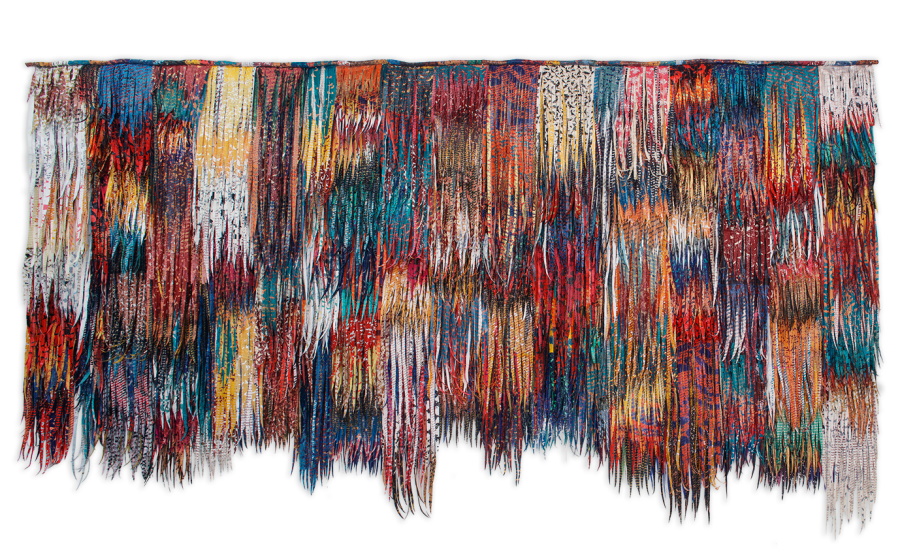
In a recent artist interview in the Textile Curator blog, the curator asked how long a piece took to complete. There was really no way to answer but the story behind Accidentals is a good case in point.
Two years ago I pinned up about 90 sheets of my silk screened plastic sheets onto a wall in my studio. It looked like a crazy quilt. I had an idea about making an oversize artist book. It was interesting but not extraordinary.
